I'm no expert at cast iron pans. There are people who have used this type of cookware for decades, all their lives even, but ever since I tossed my non-stick teflon, I have learned a thing or two about proper care for them.
And between my Lamb and Kale Skillet Dinner and these convenient breakfast Pizza Eggs, one could probably tell that that I love, love, love using my cast-iron pans. I've received them as gifts, I've searched for them at thrift shops. I've haggled over them at garage sales and I enjoy. every. single. piece. of. food. coming out of them!
{{This post may contain affiliate links. The price is the same for you. Thank you for blessing my family. }}
Below, I lay out the pros and cons of cast-iron cookware based on my experience.
Pros:
- Cast iron can be used in any heat source: stove top, oven (at any temperature), camp fire, stone oven (thank you Ma Ingalls!). Take care around glass stovetops though so as not to scratch the surface.
- Cast iron is more favorable to non-stick skillet because you would avoid toxic fumes when heating the pan. It's also a great substitution to aluminum.
- When seasoned properly, cast iron can be just as non-stick as the Teflon counterparts.
- You can actually boost your iron level when consistently using cast-iron though I wouldn't solely rely on this method if your anemic.
- Cast iron does a beautiful job at browning meats and fish.
- Cast iron is incredibly hardy and it gets better with age. I know people who have their late grandmother's cast iron. Also, no need to worry about using metal utensils as it doesn't get scratched.
- Cast irons have superior heat retention which in turn allow for even cooking.
- Cast iron pans are exceptionally affordable compared to the high-end non-stick pans. This 5-quart dutch oven is under $35 and this 10-inch skillet is a mere $15.
Cons:
- Cast iron is heavy. But one can build serious arm muscle without putting forth much effort. So really this should be a pro.
As you can see the benefits far outweigh the negative aspects of using cast iron pans.
But when I brag about my cast irons to my friends, sadly I'm getting the vibe that the feeling isn't mutual. Yes, I am totally crushin' on a piece of metal and yes, I realize my friendships are at stake. But if they only knew how easy it really is to care for those precious cast-iron pans.
I purchased these above-pictured pans for $10. Ten bucks! At a garage sale of course. And I, having already 4 of these at home, had every intention to donate them to family as soon as I got them appropriately seasoned. But then for whatever reason (greed?!) I never did give them away. I kept them. All of them.
This beautiful-satiny-smooth-finished dutch oven happens to be a Vintage Griswold Mountain Cast Iron Chicken Pan.
It's perfect for just that...roasting chicken.
And this single-serve griddle is perfect for those productive mornings for breakfast of one.
Whatever the size, there is proper care to be taken with these cast-iron pans.
Quick note: most store bought cast irons already come pre-seasoned. That's great, except the oils they use are not. Most manufacturers use a blend of vegetable oil (corn, canola, etc..) and contains massive amount of toxic trans fats. Never mind the GMO presence in most of these oils. With my pre-seasoned cast iron pans, I wasn't aware of this small tidbit and didn't take extra TLC to strip the seasoning and re-apply it the correct way. And honestly, I'm okay with that because the benefits of using a pre-seasoned-with-vegetable-oil pan is still better than using a hazardous non-stick skillet, in my opinion. So, if you don't care to do this extra step, no worries. I would at the very least, wash it with hot soapy water before first use (just as you should with all kitchenware) and season it properly.
A better (and much cheaper) option would be to snag a cast iron at a thrift store or better yet at a garage sale.
How to Restore Rusty or Poorly Seasoned Cast Iron
STEP 1: Scrub the pan using salt and a scrubbing pad. Wash with soap under hot water.
STEP 2: Dry well. I placed it on low-medium heat so it is thoroughly dried.
STEP 3: Oil it well using an old rag, both inside and outside, lid, edges, spouts, handle: every square inch of the pan should be oiled. You may use another rag (or paper towel) to wipe excess oil so you just get a light sheen.
STEP 4: Line the bottom of oven rack with foil and place the pan upside down on the top rack. Bake at 350⁰ F (175⁰ C) for 1-2 hour(s) to bake the oil into the pan. Turn off the oven and allow to completely cool.
How to Care for Seasoned Cast Iron
After each use, I wash it under hot water with a sponge (use soap if needed). Place it on the stove top, and allow to dry well on low heat. Add ¼ teaspoon of oil and using my designated brush, I spread the oil around the insides of the pan making sure to cover all sides and bottom. Keep it on low heat for about a minute for the oil to absorb. It's ready to be stored and used for next time. I generally season after each use, or at the very least every other use and this way, it continues to provide that lovely finish.
What Oils are Best for Seasoning Cast Iron
I prefer the ease and comfort of using something I already have. Some sources recommend flax oil or palm oil. Neither of which I have so I most often use either coconut oil, lard, or butter. You want to use an oil that has a high smoke point.
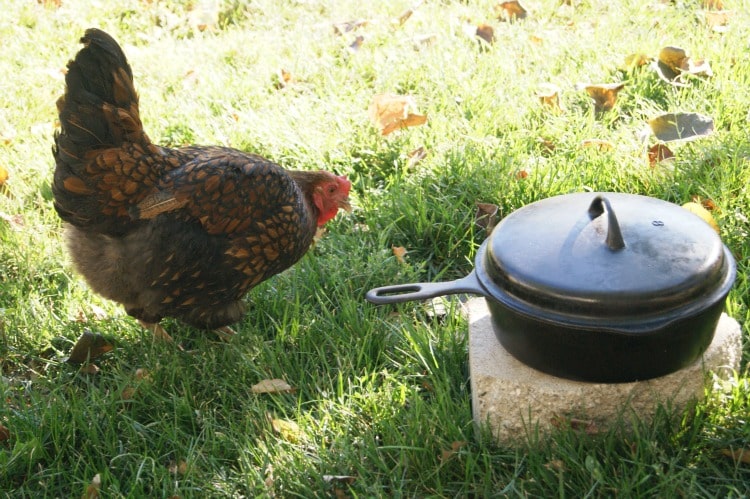
Taking care of cast iron pans will become second nature after a few uses of properly seasoned pans.
Let's connect! I share more personal, daily snippets of life on Instagram, insightful articles and awesome recipes on Facebook and pin away like it's going out of style on Pinterest.
This post has been shared on: Real Food Friday | Savoring Saturdays | Simply Natural Saturdays |


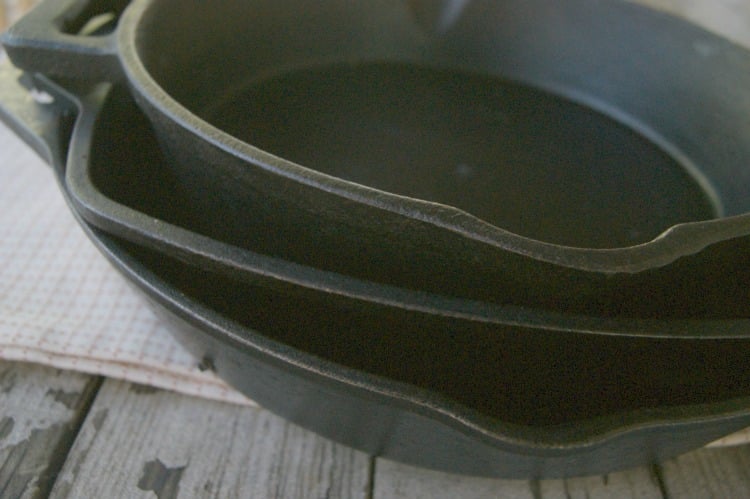
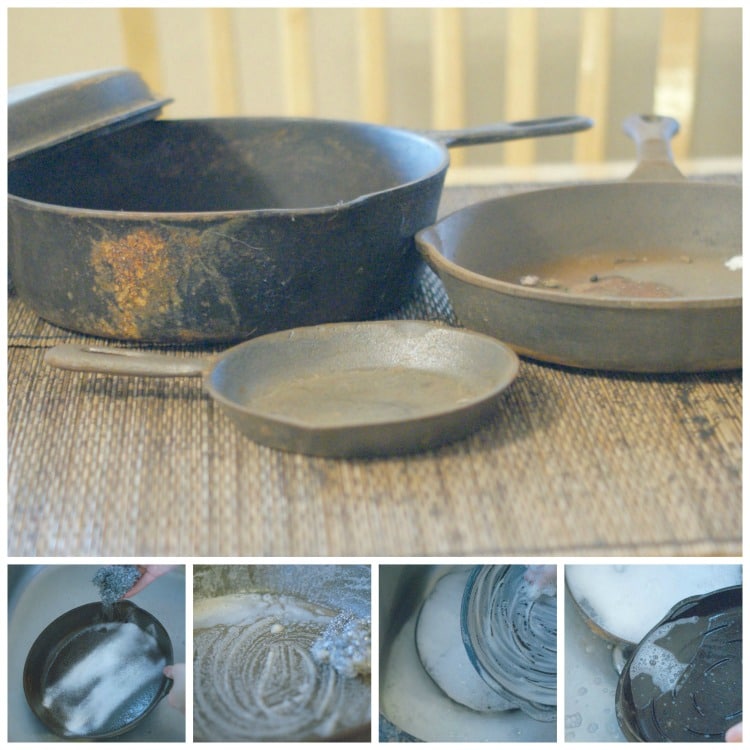
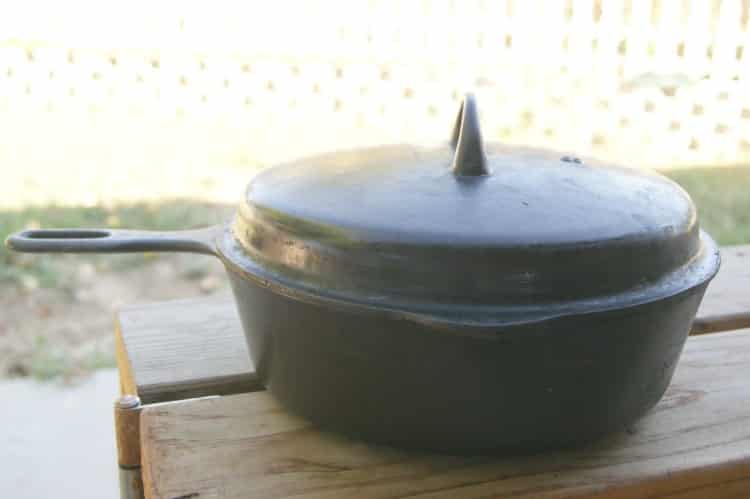
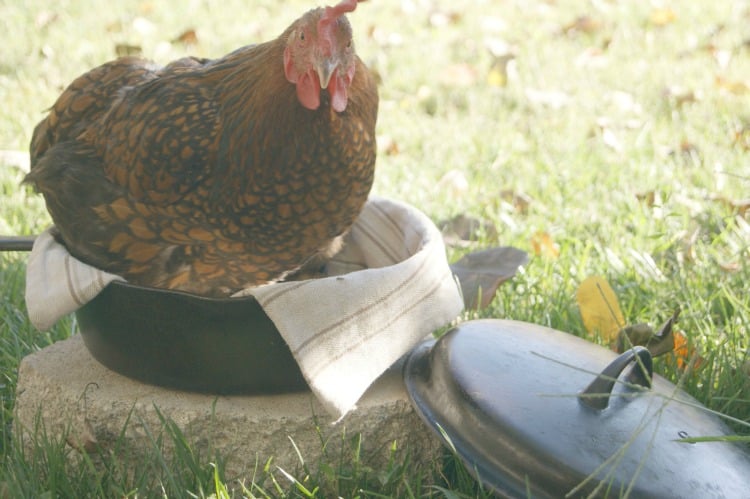
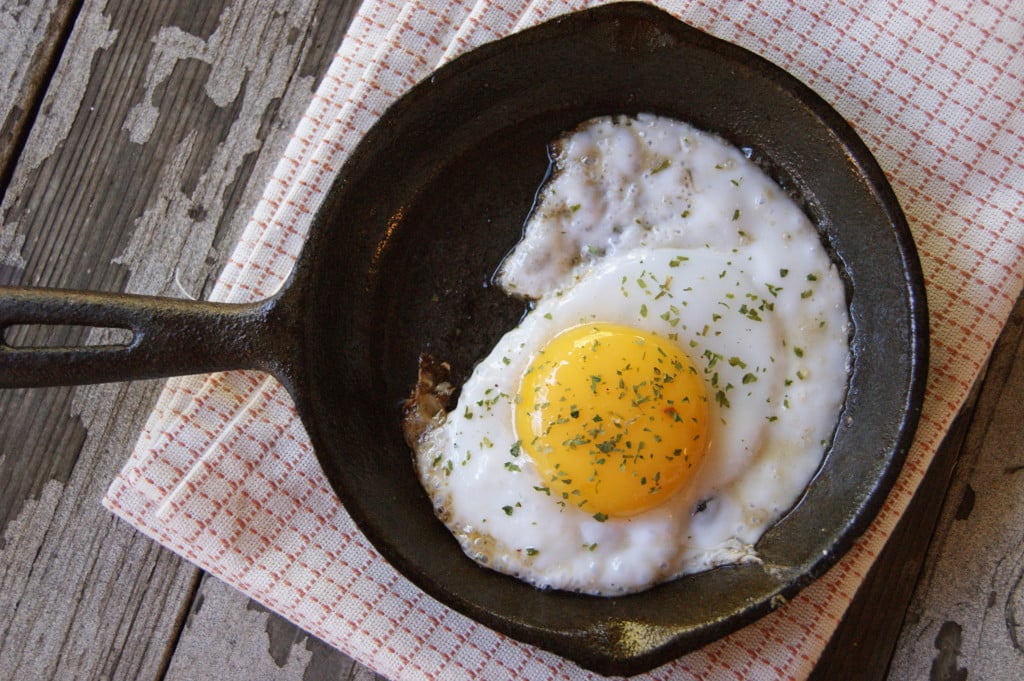
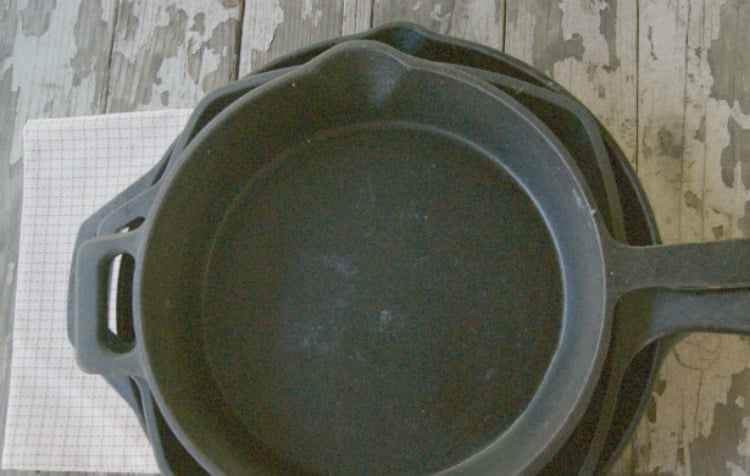
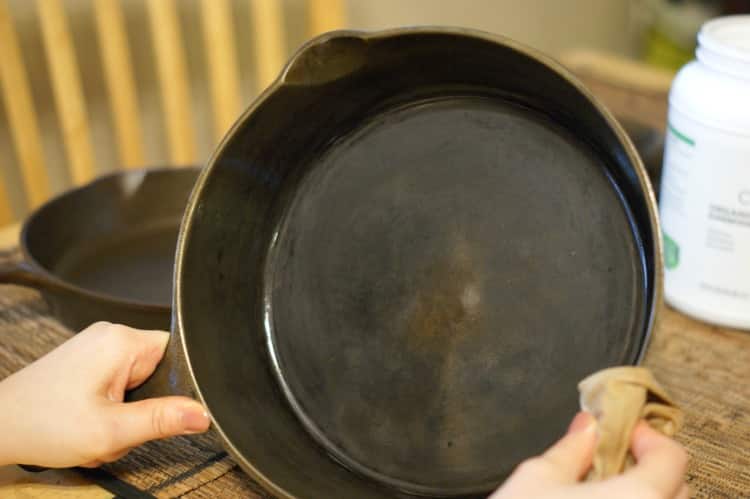
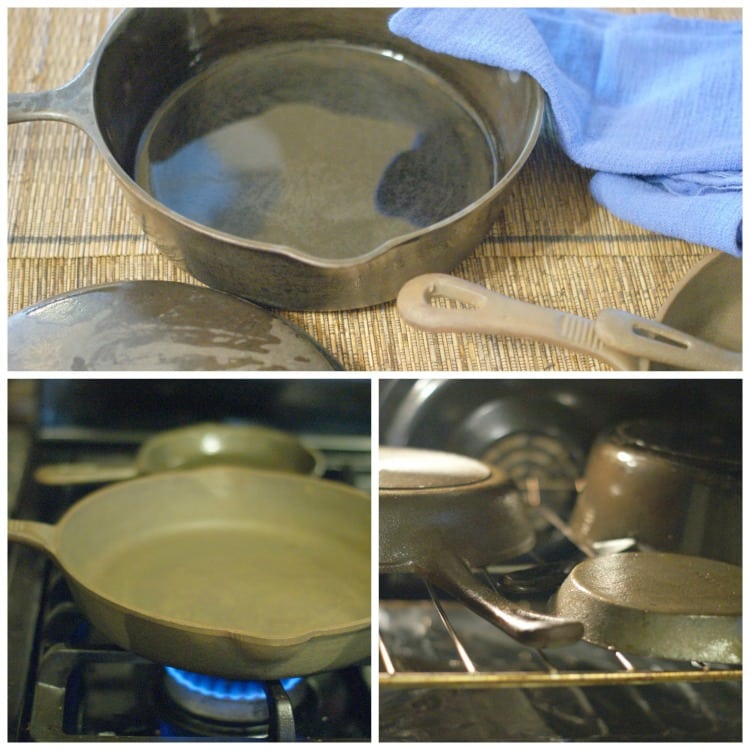
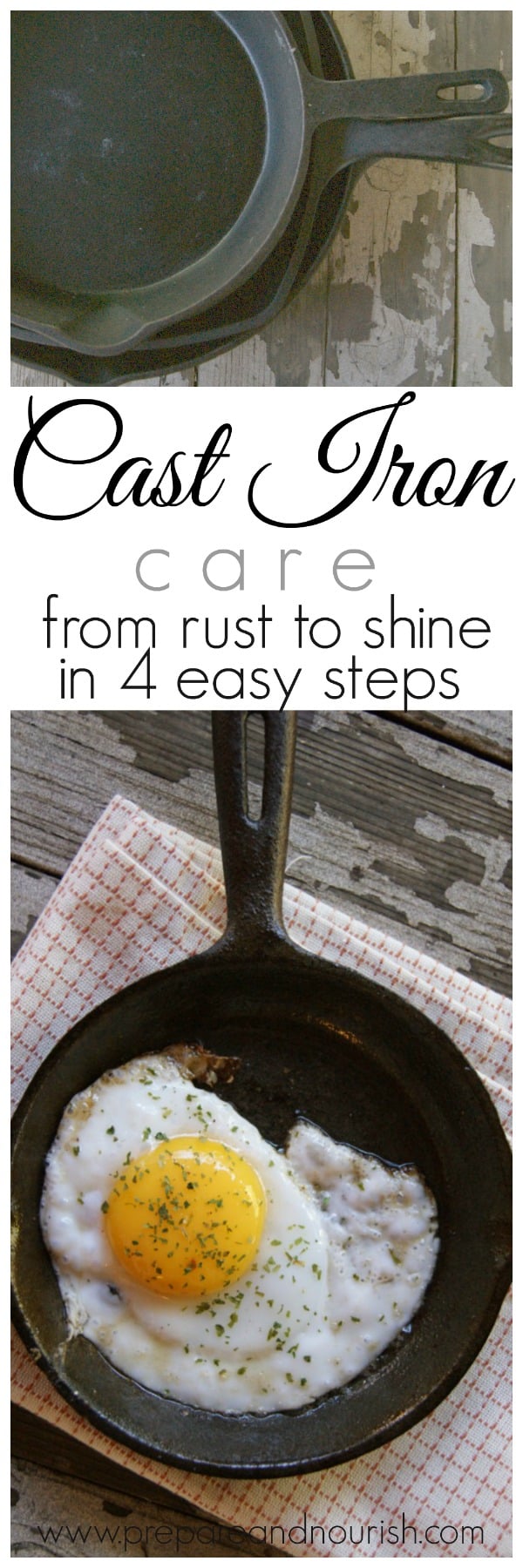





Rashel says
I found this post through the link up on Recipes to Nourish. I really need to reseason my cast iron pans and then be much more consistent keeping them seasoned. I'm horrible at that, which means my pans don't work the greatest. Thank you for the inspiration!
Anya says
Thanks Rashel - you will love using them once they are well seasoned.
Marla says
HI Anya,
I used to use cast iron but found out from my doctor that iron can be harmful to some people especially menopausal females -iron is one of the few minerals we cannot eliminate except through blood loss so toxicity can occur.
But to be fair for many people it is completely safe and certainly a healthier alternative to Teflon and other toxic non stick coated pans. Sorry did not mean to discredit your article because you have made some very important and valid statements.
Thanks for sharing on Real Food Fridays. Pinned & tweeted!
Anya says
Yes, Marla - you are correct - we do not eliminate iron except through blood loss. However, surprisingly a lot of people are actually deficient in this mineral. Post-menopausal women should avoid iron. I try to avoid cooking tomato-based recipes in cast iron though - that seems to be pulling a lot of iron. Thank you Marla for your insight. All the best.
Cindy says
I love cast iron. Most of my pans have been handed down a generation or two. A couple of them have been seasoned so long term, that they no longer need to be 'touched-up'. A couple of suggestions: never use soap in a seasoned cast iron. If seasoned correctly, a quick run under running water should suffice. Along with reheating to remove all water to avoid rust. In worse cases, rub with course salt to clean. If you happen to be so lucky as to find an old piece that is rusted, simply clean with salt & lemon. With a bit of elbow grease, you will have a fantastic pan. Reseason a few times and you're good to go! These pans only get better with age, so look in your grandmas cupboard or the local thrift store rather then buying new.
Anya says
Those are all great tips, Cindy. Thanks for sharing. I do love a rusty cast iron - so much potential!